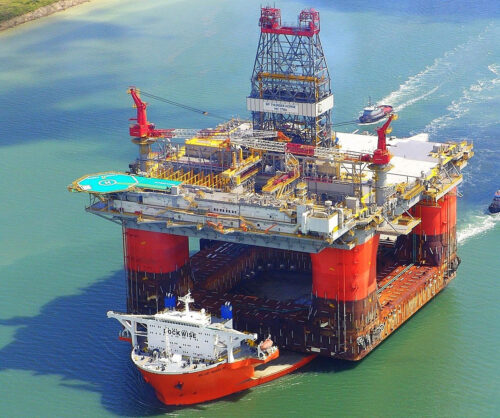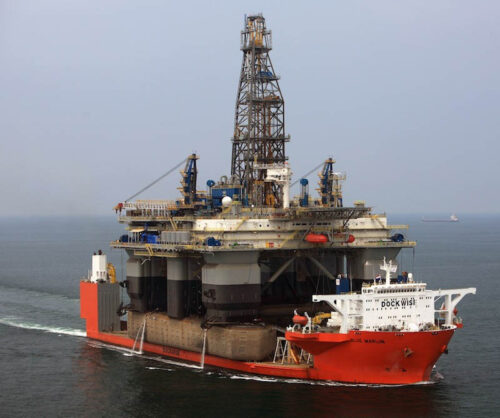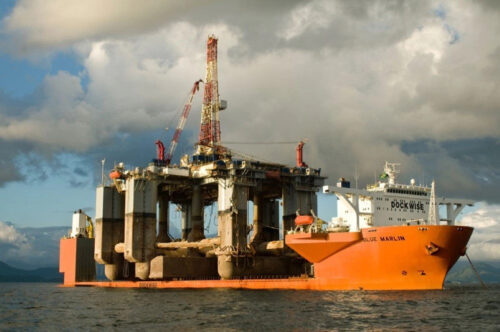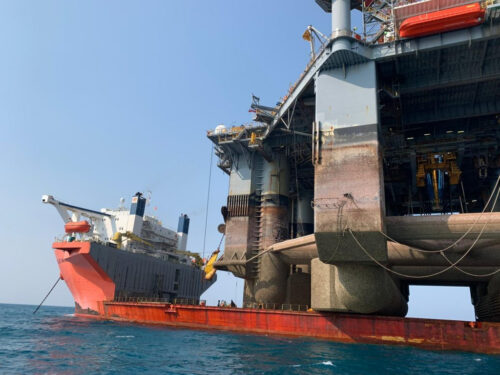The shipping industry has a rich and extensive history, evolving over thousands of years to become a vital part of global trade and transportation.

With advancements in technology, ships have grown in size and complexity, enabling them to carry a wide range of goods across vast distances. One notable accomplishment in modern shipping is the production and transportation of the world’s largest oil rig.
This article delves into the remarkable history of the shipping industry, focusing on the awe-inspiring process behind creating and delivering this monumental rig.
Offshore Drilling and the Growth of Shipping: The shipping industry has experienced significant growth due to the development of offshore drilling technology.
Oil companies have turned to offshore rigs to exploit new sources of oil and gas, leading to the construction of massive and intricately designed structures. These rigs, such as the world’s largest, demand extensive engineering expertise throughout their production.

Building the World’s Largest Oil Rig: In the early 2000s, an ambitious consortium of oil companies unveiled plans to construct the largest oil rig ever built.
South Korea, renowned for its shipyards and proficiency in manufacturing large vessels, became the chosen location for the rig’s construction. The rig’s design was based on the concept of a floating production, storage, and offloading (FPSO) vessel, essentially a converted giant oil tanker.
A Monumental Undertaking: Building an oil rig of this scale involves thousands of workers and takes several years to complete. The rig is constructed in sections, with each segment fabricated in different locations worldwide.

Once finished, these sections are transported to Korea for assembly. Transporting these colossal components requires specialized vessels capable of carrying extremely heavy loads, ensuring they are securely fastened to prevent shifting during transit.
Overcoming Logistical Challenges: Shipping the rig’s parts presents logistical challenges. Vessels must navigate narrow channels, avoid other means of transportation, and adapt to unpredictable weather conditions.
At times, ships may have to slow down or alter course to circumvent obstacles or unfavorable conditions. However, despite these obstacles, the rig’s components were successfully shipped to South Korea for final assembly.

Engineering Marvel: The completed oil rig stands as an engineering marvel, weighing over 600,000 tons and towering above 500 feet in height. Equipped with cutting-edge technology, the rig is capable of drilling for oil and gas at depths reaching 12,000 feet.
This impressive achievement highlights the ingenuity and expertise of the shipping industry, showcasing its ability to tackle complex and ambitious projects.
The shipping industry’s history has been shaped by continuous technological advancements that enable the transportation of goods and resources across vast distances and challenging environments.
The production and delivery of the world’s largest oil rig exemplify the capabilities of the shipping industry. This remarkable achievement serves as a testament to the industry’s determination, expertise, and ability to undertake extraordinary projects.
The shipping industry continues to play a vital role in global trade, facilitating the movement of goods and resources worldwide.
